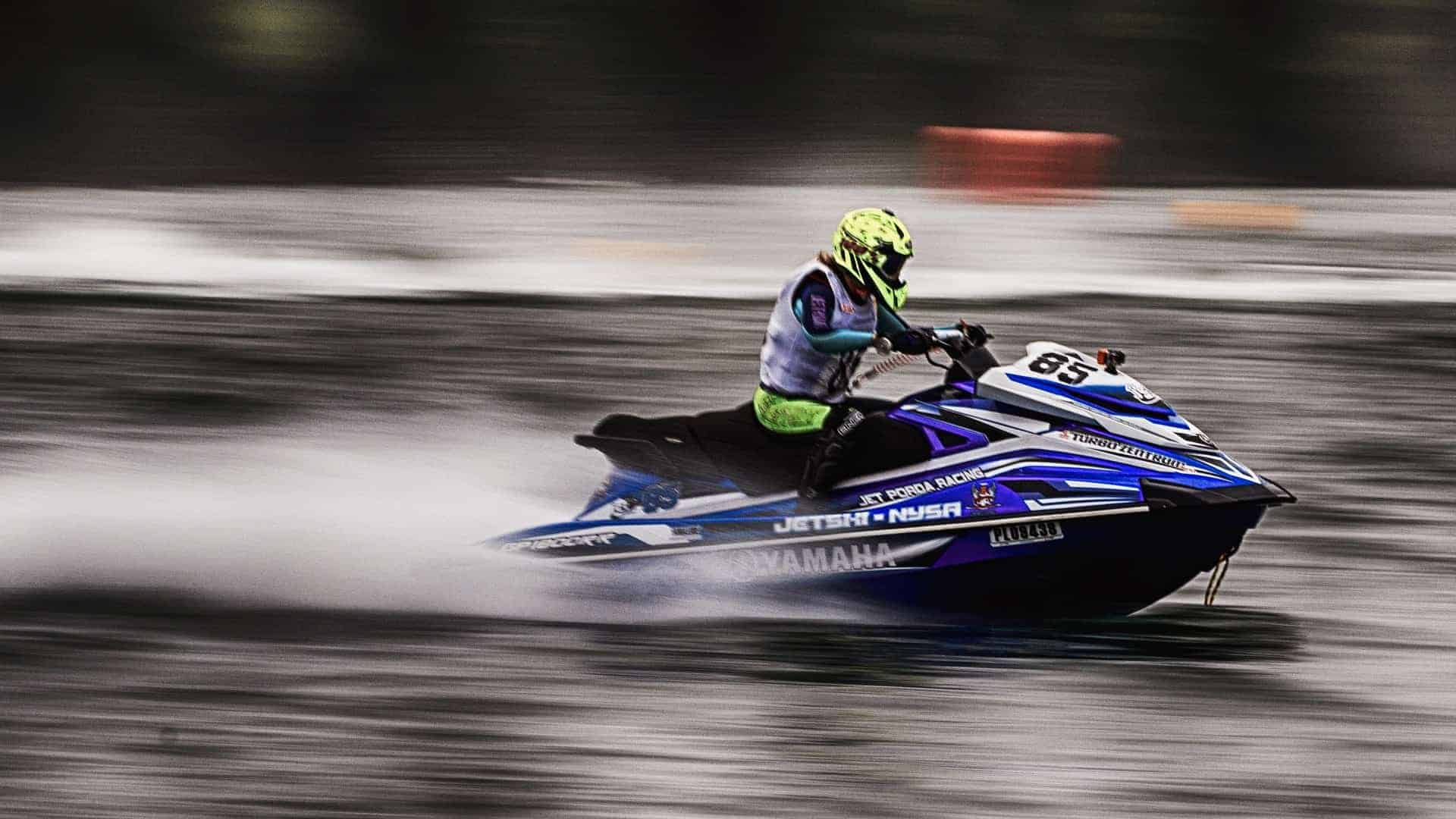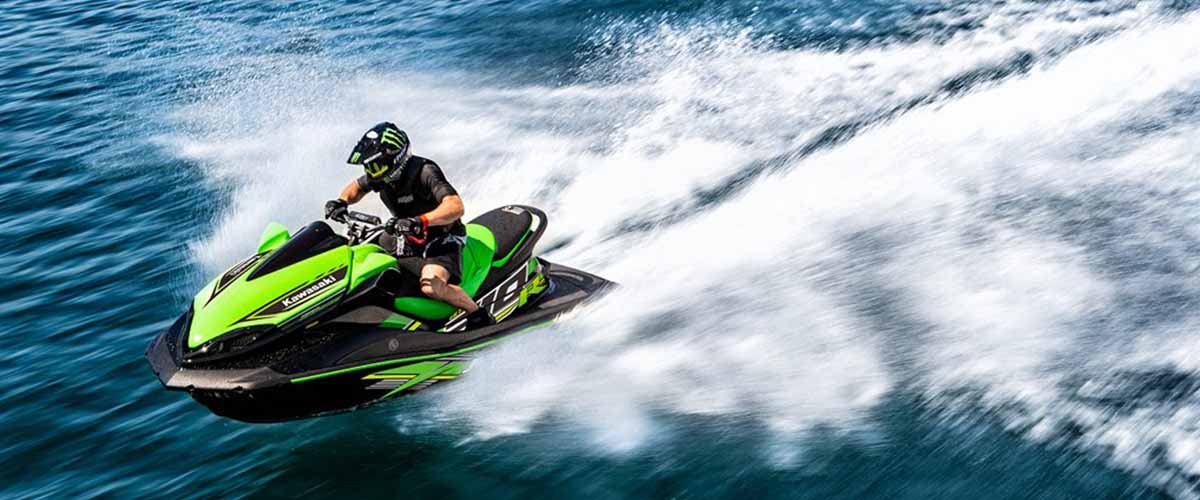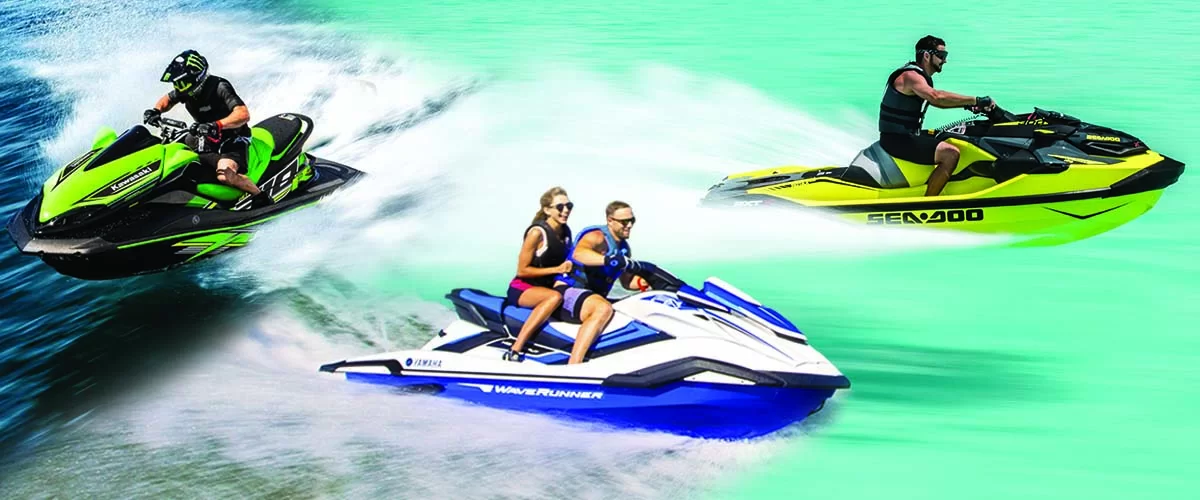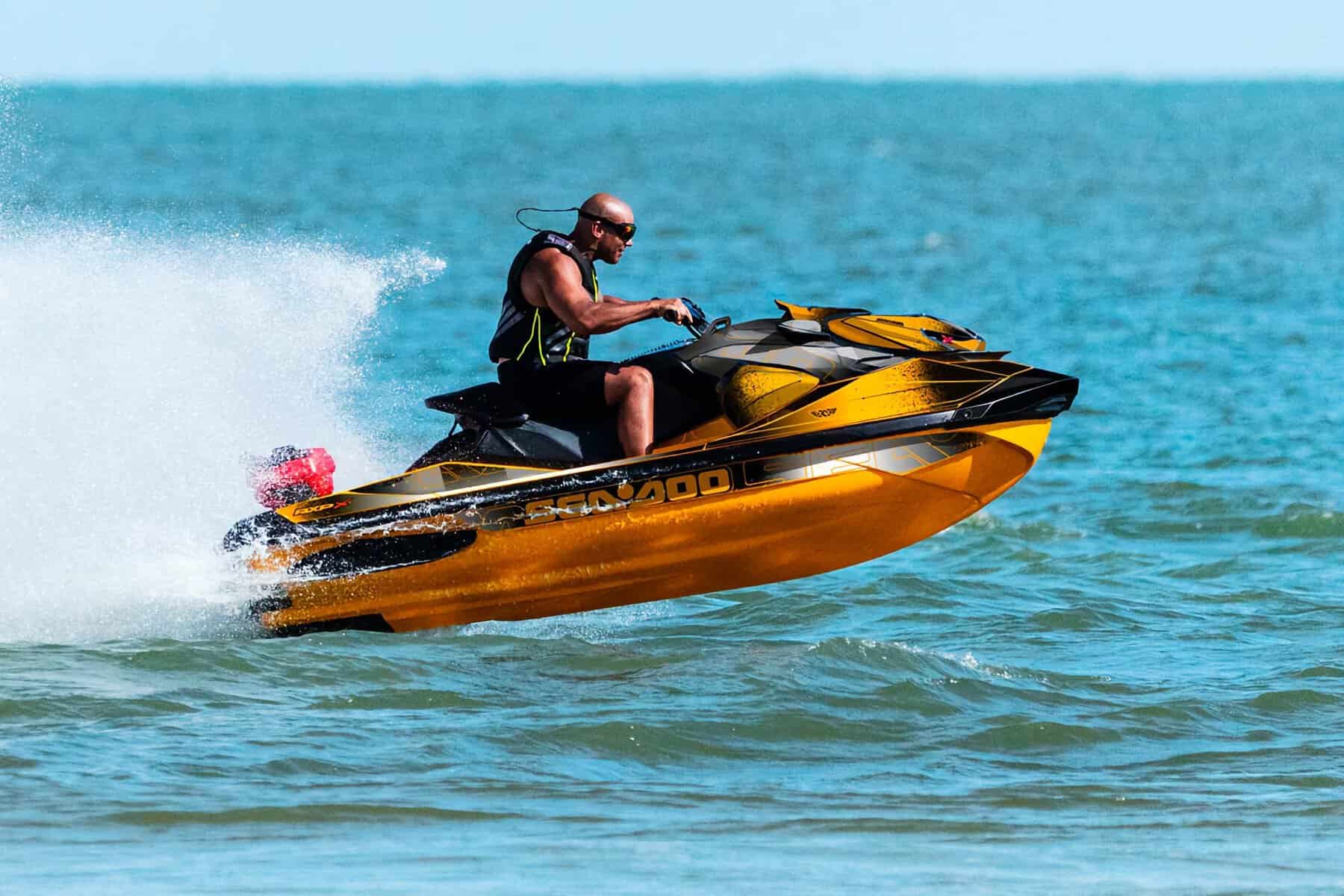Jet skis have become a popular watercraft for thrill-seekers and water enthusiasts alike. These powerful machines provide an exhilarating experience as riders zoom across the water, feeling the wind in their hair and the spray of the waves on their face. However, like any other vehicle, jet skis are subject to speed limits to ensure safety on the water.
The history of jet skis dates back to the 1970s when Clayton Jacobson II invented a personal watercraft that would revolutionize recreational boating. Originally called “water scooters,” these early models were powered by internal combustion engines and had limited speed capabilities. Over time, advancements in technology led to more powerful engines and sleeker designs, resulting in faster jet skis.
Speed limits for jet skis are put in place by regulatory bodies such as local authorities or maritime organizations. These limits vary depending on factors such as location, water conditions, and proximity to other vessels or swimmers. The purpose of these speed limits is to prevent accidents and collisions while ensuring a safe environment for all users of the waterways.
Key Takeaways
- Jet skis have speed limits that vary by location and waterway.
- Factors that affect jet ski speed include weight, water conditions, and engine power.
- The fastest jet skis on the market can reach speeds of over 80 mph.
- The world record for jet ski speed is 107.6 mph.
- Breaking the speed limit on a jet ski can result in safety concerns and legal consequences.
The Science of Jet Ski Speed
To understand how jet ski speed is achieved, it’s important to delve into the science behind these impressive machines. Jet skis operate using a propulsion system known as a jet pump or impeller system. This system draws in water through an intake grate located at the bottom of the craft and then propels it out through a nozzle at high speeds.
The power behind this propulsion system comes from an internal combustion engine that drives a rotating impeller inside the pump housing. As fuel is ignited within the engine cylinders, it creates energy that is transferred through mechanical components until it reaches the impeller blades.
Factors such as engine power output, impeller design, hull shape, weight distribution, and overall aerodynamics contribute to achieving higher speeds on a jet ski. Manufacturers constantly strive to improve these factors to create faster and more efficient watercraft.
Factors that Affect Jet Ski Speed
While the design and engineering of a jet ski play a significant role in determining its speed capabilities, there are several other factors that can affect how fast a jet ski can go.
One crucial factor is the weight and size of the rider. A heavier rider will put more strain on the engine, making it harder for the jet ski to reach its maximum speed potential. Additionally, larger riders may experience increased drag due to their body size, which can also impact overall speed.
Water conditions also play a vital role in jet ski performance. Calm waters with minimal waves or choppy conditions can significantly affect how fast a jet ski can travel. Rough waters create more resistance against the hull, impeding forward motion and reducing top speeds.
The type of jet ski being used is another important factor to consider when discussing speed capabilities. Different models have varying engine sizes, horsepower ratings, and overall designs that contribute to their performance on the water. Some models are specifically designed for high-speed racing while others prioritize stability or maneuverability over raw speed.
The Fastest Jet Skis on the Market
| Brand | Model | Top Speed (mph) | Acceleration (0-60 mph) | Price Range |
|---|---|---|---|---|
| Kawasaki | Ultra 310X | 67 | 3.3 seconds | 15,299 – 16,299 |
| Sea-Doo | RXP-X 300 | 67 | 3.6 seconds | 15,399 – 17,399 |
| Yamaha | GP1800R HO | 70 | 3.5 seconds | 13,299 – 14,299 |
| Kawasaki | Ultra 310R | 67 | 3.3 seconds | 16,299 – 17,299 |
| Sea-Doo | GTX Limited 300 | 67 | 3.8 seconds | 17,399 – 18,399 |
For those seeking an adrenaline rush on the water, there are several top-of-the-line jet skis known for their impressive speeds and cutting-edge technology.
One notable model is the Yamaha GP1800R SVHO WaveRunner®, which boasts an 1,812cc supercharged engine capable of producing jaw-dropping acceleration and top speeds exceeding 70 miles per hour (112 kilometers per hour). This high-performance machine combines power with agility for an exhilarating ride like no other.
Another contender in this category is Sea-Doo’s RXP-X 300 personal watercraft. Equipped with a Rotax® 1630 ACE™ engine delivering 300 horsepower, this model offers exceptional acceleration and reaches speeds of up to 67 miles per hour (108 kilometers per hour). Its sleek design and advanced handling features make it a favorite among speed enthusiasts.
Kawasaki’s Ultra 310X is also worth mentioning, with its supercharged 1,498cc engine generating an impressive 310 horsepower. This model can reach speeds of up to 67 miles per hour (108 kilometers per hour) and offers a comfortable and stable ride even at high velocities.
The World Record for Jet Ski Speed
When it comes to pushing the limits of jet ski speed, there are individuals who have gone above and beyond to set world records in this exhilarating sport. Currently, the official Guinness World Record for the fastest jet ski speed stands at an astonishing 107.6 miles per hour (173.3 kilometers per hour).
This record was achieved by Australian rider Lee Stone on Lake Dumbleyung in Western Australia back in October 2018. Stone utilized a modified Yamaha FX SVHO WaveRunner® equipped with aftermarket performance parts to achieve this incredible feat.
Stone’s record-breaking run required meticulous planning, precise tuning of the watercraft’s engine and impeller system, as well as favorable weather conditions on the day of his attempt. It serves as a testament to both human determination and technological advancements in jet ski engineering.
Safety Concerns when Breaking the Speed Limit
While breaking speed limits may seem thrilling, it is essential to recognize that high-speed jet skiing comes with inherent risks that should not be taken lightly.
One major concern is loss of control at high speeds. As riders push their jet skis to their limits, any sudden maneuver or unexpected obstacle can lead to loss of balance or stability, potentially resulting in accidents or injuries.
Another safety consideration is increased stopping distance when traveling at higher speeds. It takes longer for a fast-moving watercraft to come to a complete stop compared to one traveling at lower speeds. This means that reaction times and distance awareness become even more critical when operating at high velocities.
Wearing appropriate safety gear is of utmost importance when engaging in high-speed jet skiing. A well-fitted personal flotation device (PFD) should always be worn to ensure buoyancy and protection in case of a fall or collision. Additionally, wearing a helmet, goggles, and protective clothing can help minimize the risk of injury.
Legal Consequences of Speeding on a Jet Ski
Speed limits for jet skis are not arbitrary rules; they are put in place to maintain safety on the waterways. Violating these speed limits can result in fines, penalties, and potential legal issues.
The specific fines and penalties for breaking speed limits vary depending on local regulations and jurisdiction. In some areas, exceeding the speed limit by a certain margin may result in escalating fines or even confiscation of the watercraft.
Moreover, accidents caused by excessive speed can lead to legal consequences beyond just traffic violations. If an accident results in property damage or bodily harm to another person, the responsible party may face civil lawsuits seeking compensation for medical expenses, lost wages, pain and suffering, or other damages incurred as a result of their actions.
It is crucial for jet ski riders to familiarize themselves with local laws regarding speed limits and adhere to them at all times to avoid unnecessary legal complications.
How to Safely Push the Limits of Your Jet Ski
For those who wish to experience higher speeds on their jet skis while maintaining safety as a top priority, there are several tips that can help achieve this balance.
Firstly, it is essential to gradually increase your speed over time rather than attempting drastic jumps from one level to another. This allows you to become accustomed to each incremental increase while developing better control over your watercraft’s handling characteristics at higher speeds.
Practicing emergency maneuvers such as quick stops or evasive turns at lower speeds will help build muscle memory and improve your ability to react swiftly in unexpected situations. These skills become even more critical when operating at higher velocities.
Experience plays a significant role in safely pushing the limits of your jet ski. The more time you spend on the water, the better you will understand how your craft responds to different conditions and how to adapt your riding style accordingly. Building experience gradually will enhance both your confidence and competence as a high-speed rider.
Tips for Maintaining Your Jet Ski’s Speed
To ensure that your jet ski continues to perform at its best, regular maintenance and proper upkeep are essential.
Regularly inspecting and cleaning the intake grate is crucial for maintaining optimal performance. Debris such as seaweed or plastic bags can get caught in the grate, restricting water flow into the pump system and reducing speed capabilities.
Additionally, checking and replacing worn impeller blades is necessary to maintain efficiency. Damaged or bent blades can disrupt water flow, resulting in decreased acceleration or top speed.
Proper storage of your jet ski during periods of non-use is also important for preserving its performance. Storing it out of direct sunlight, away from extreme temperatures or corrosive elements will help prevent deterioration of engine components over time.
Lastly, following manufacturer-recommended maintenance schedules for oil changes, filter replacements, spark plug inspections, and other routine tasks will ensure that all systems are functioning optimally for maximum speed potential.
The Future of Jet Ski Technology and Speed
As technology continues to advance across various industries, so too does the world of jet skis. Manufacturers are constantly pushing boundaries with new designs and engineering innovations aimed at achieving even faster speeds on these exhilarating watercrafts.
One area where significant progress has been made is electric propulsion systems for personal watercrafts. Electric-powered jet skis offer several advantages over traditional internal combustion engines such as reduced noise pollution, lower emissions levels, improved torque delivery at low speeds, and potentially higher top speeds.
Advancements in materials science and hull design are also contributing to faster jet skis. Lightweight yet durable materials allow for improved power-to-weight ratios, resulting in enhanced acceleration and higher top speeds. Additionally, aerodynamic hull shapes reduce drag, allowing watercrafts to cut through the water more efficiently.
The future of jet ski technology holds exciting possibilities for speed enthusiasts, with ongoing research and development focused on optimizing performance while maintaining safety standards.
Enjoying Jet Skiing Responsibly and Safely
Jet skiing is a thrilling activity that offers an unparalleled sense of freedom on the water. However, it is crucial to approach this sport responsibly and prioritize safety at all times.
Understanding the history of jet skis, the science behind their speed capabilities, and the factors that affect their performance allows riders to make informed decisions when pushing their craft’s limits.
While it may be tempting to break speed limits or attempt daring maneuvers, it is essential to recognize the risks involved. Wearing appropriate safety gear, adhering to local regulations regarding speed limits, practicing emergency maneuvers at lower speeds, and gradually building experience are all key elements in enjoying high-speed jet skiing safely.
By maintaining your jet ski properly through regular maintenance routines and following manufacturer guidelines for storage and cleaning practices ensures that your craft will continue performing at its best over time.
As technology continues to evolve within the industry, we can expect even faster jet skis in the future. However exciting these advancements may be, it is vital always to prioritize responsible behavior on the waterways while enjoying this exhilarating sport.
FAQs
What is a jet ski?
A jet ski is a personal watercraft that is designed to be ridden by one or two people. It is powered by a jet engine and is used for recreational purposes such as racing, cruising, and water sports.
How fast can a jet ski go?
The speed of a jet ski depends on various factors such as the model, engine size, and water conditions. On average, a jet ski can go up to 60-70 mph, while some high-performance models can reach speeds of up to 80-90 mph.
What are the safety precautions for riding a jet ski?
Some of the safety precautions for riding a jet ski include wearing a life jacket, following the speed limit, avoiding crowded areas, maintaining a safe distance from other watercraft, and being aware of the water conditions.
What are the laws regarding jet ski speed limits?
The laws regarding jet ski speed limits vary from state to state and country to country. In general, most states have a speed limit of 5-10 mph within 100-200 feet of the shore and 50-100 feet of other watercraft. Some states also have specific speed limits for certain waterways.
What are the benefits of riding a jet ski?
Riding a jet ski can provide various benefits such as improving physical fitness, reducing stress, enhancing mental health, and promoting social interaction. It can also be a fun and exciting way to explore the water and enjoy the outdoors.
Originally posted 2024-01-23 03:31:09.



